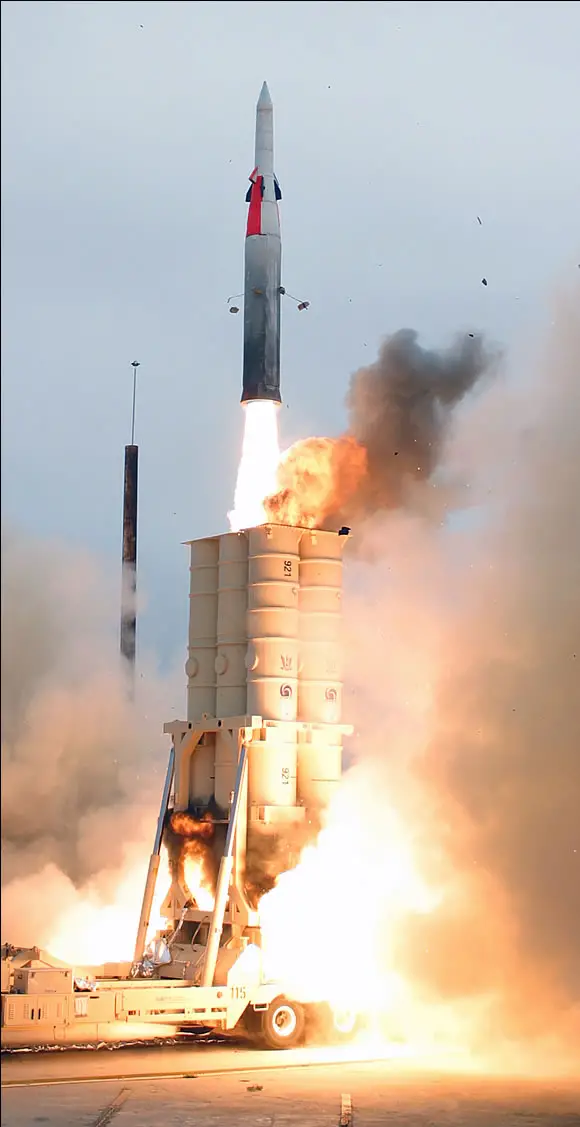
An Arrow anti-ballistic missile is launched as part of the on going United States/Israel Arrow System Improvement Program (ASIPP) at Point Mugu Sea Range in California, July 29, 2004. The missile successfully intercepted a short-range target during tests, this was the twelfth Arrow intercept test and the seventh test of the complete Arrow system. The objective of the test was to demonstrate the Arrow system's improved performance against a target that represents a threat to Israel. The test represented a realistic scenario that could not have been tested in Israel due to test-field safety restrictions.
>
The two-stage missile is equipped with solid propellant booster and sustainer rocket motors. The missile uses an initial burn to carry out a vertical hot launch from the container and a secondary burn to sustain the missile's trajectory towards the target at a maximum speed of Mach 9, or 2.5km/s. Thrust vector control is used in the boost and sustainer phases of flight. At the ignition of the second stage sustainer motor, the first stage assembly separates.
The Arrow missile is launched before the threat missile's trajectory and intercept point are accurately known. As more trajectory data becomes available, the optimum intercept point is more precisely defined and the missile is guided towards the optimum intercept point.
The kill vehicle section of the missile, containing the warhead, fusing and the terminal seeker, is equipped with four aerodynamically controlled moving fins to give low altitude interception capability. The warhead is a high explosive directed blast fragmentation warhead developed by Rafael, which is capable of destroying a target within a 50m radius. The dual mode missile seeker has a passive infrared seeker for the acquisition and tracking of tactical ballistic missiles and an active radar seeker used to home on air breathing targets at low altitudes. The infrared seeker is an indium antimonide focal plane array developed by Raytheon (formerly Amber Engineering).
The intercept altitudes are from a minimum of 10km up to a maximum of 50km. The maximum intercept range is approx. 90km
| Missile | � |
Missile length | 7.0m� |
Missile diameter | 800mm� |
Missile launch weight | 1,300kg |
Launch canisters per launcher | 6 |
| Radar | � |
Radar frequency | L band� |
Detection range | 500km� |
Target speed� | Over 3km/s |
Missile guidance to distance from target | 4m from target� |
| Missile Performance | � |
Missile velocity | Mach 9� |
Maximum range | 70.0km� |
Maximum range of flight | 90.0km |
Minimum altitude | 8,000m |
Maximum altitude | 50,000m |
Posted: 08/01/2004